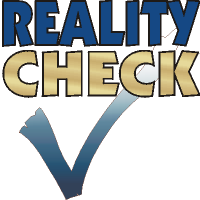Just when you thought these columns were all about joy, positivity and success, here comes one on failure!
I’m grateful to one of my readers for inspiring me to examine failure and how to define it. There’s a practical application here. If you’re pursuing a leadership position, it’s not unusual to be asked, “How do you define success?” It’s just as valid to be asked, “How do you define failure?”
There is plenty of advice around on how to define success. A definition consistent with choice theory would suggest that you start by examining what you want. When you perceive that your reality is consistent with what you want, then you feel satisfied. In other words, successful!
So, is failure as simple as, “I’m not getting what I want”? Not necessarily. Another important factor is direction of movement.
Here’s a classic reality therapy question: “Is what you are doing bringing you closer to what you want?” Or is it taking you further away?”
If you’ve ever been ill, you know that feeling slightly better each day is far more satisfying than feeling slightly worse each day. In a broken relationship, even a small movement toward becoming closer is much more satisfying than moving further apart.
The goal is important. However, the direction of movement is important, too.
Dr. W. Edwards Deming, the quality guru who inspired some of Dr. Glasser’s perspectives on lead management, made famous what is known as a “continuous improvement cycle.”
This cycle is a never-ending rotation of four steps. The first step is planning (i.e. deciding what you want.)
The next step is an experiment; try a small-scale action that you think will help you toward what you want. The experiment is followed by the third step: checking. “What happened? Did it work as we expected?”
The fourth step is to take action based on what you’ve learned. Then you start all over again, in a never-ending cycle toward improvement.
While all the steps are important, the checking step—much like the self-evaluation step in reality therapy—is key. No matter how the experiment turns out, the cycle doesn’t end in “failure.”
If the experiment resulted in improvement, then we’ve gained information we can expand on. We can apply the action more broadly, perhaps implement it permanently.
But what if the experiment had negative results? Perhaps it didn’t improve anything, or even made things worse. It’s still successful in that we’ve gained valuable information—about what not to do! So try something different on our next trip round the cycle.
Even if the result is inconclusive, we still gain information about what not to bother trying again. Whatever the results, we’ve learned something.
In this process, what would it mean to “fail”? A reasonable interpretation is that failure is when you choose not to learn from the effects of your actions. We keep doing the same thing over and over, not recognizing or refusing to acknowledge the effects of our actions. We try an experiment, but choose not to learn from what it tells us.
How about, “If I don’t get the result I want, I give up”? That also sounds like failure. It’s certainly not what Deming promoted with his cycle, nor Dr. Wubbolding with his reality therapy cycle.
While we may aim for perfection in the planning stage, continuous improvement implies a process. The information we gain along the way tells us how to carry on.
Failure is always an option if we choose not to learn from a disappointing result. Another option, regardless of the experimental result, is to step back and say, “Well, that’s interesting. I wonder how I can use it to improve next time?”
Do you worry about failure? Might looking at it as part of a continuous improvement process be helpful?

